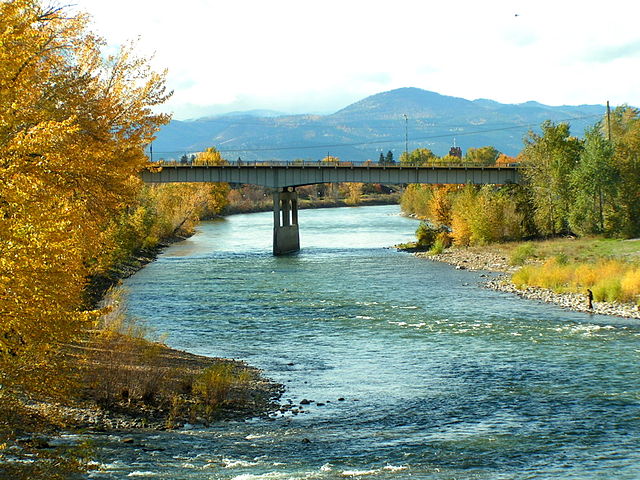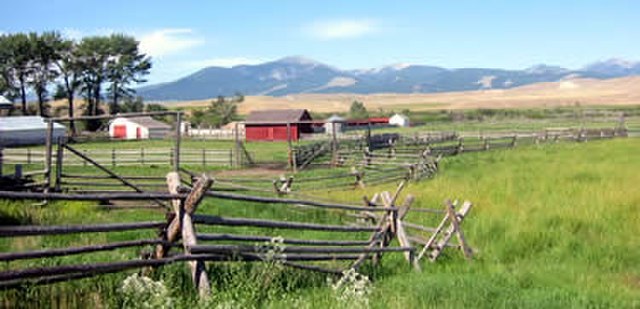Grant–Kohrs Ranch National Historic Site
The Grant–Kohrs Ranch National Historic Site, created in 1972, commemorates the Western cattle industry from its 1850s inception through recent times. The original ranch was established in 1862 by a Canadian fur trader, Johnny Grant, at Cottonwood Creek, Montana, along the banks of the Clark Fork river. The ranch was later expanded by a cattle baron, Conrad Kohrs (1866–1920). The 1,618 acres (6.55 km2) historic site is maintained today as a working ranch by the National Park Service.
Grant–Kohrs Ranch
Original ranch
Kohrs-Bielenberg ranch, c. 1880
Branding irons, the “Dutch K” used for horses, the C and K brands (for Conrad Kohrs) used for cattle
The Clark Fork, or the Clark Fork of the Columbia River, is a river in the U.S. states of Montana and Idaho, approximately 310 miles (500 km) long. The largest river by volume in Montana, it drains an extensive region of the Rocky Mountains in western Montana and northern Idaho in the watershed of the Columbia River. The river flows northwest through a long valley at the base of the Cabinet Mountains and empties into Lake Pend Oreille in the Idaho Panhandle. The Pend Oreille River in Idaho, Washington, and British Columbia, Canada which drains the lake to the Columbia in Washington, is sometimes included as part of the Clark Fork, giving it a total length of 479 miles (771 km), with a drainage area of 25,820 square miles (66,900 km2). In its upper 20 miles (32 km) in Montana near Butte, it is known as Silver Bow Creek. Interstate 90 follows much of the upper course of the river from Butte to Saint Regis. The highest point within the river's watershed is Mount Evans at 10,641 feet (3,243 m) in Deer Lodge County, Montana along the Continental Divide.

The Clark Fork at Missoula, Montana
Clark Fork flowing through downtown Missoula (2003)
The mouth of the Clark Fork on Lake Pend Oreille in Idaho







